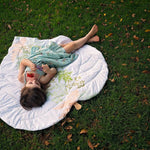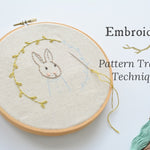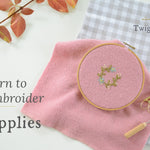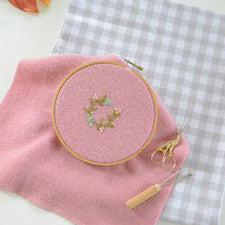It’s Coat Week here at Twig + Tale! We love showing just how simple it can be to create your own cosy, comfortable outerwear using T+T, and invite you along for the journey this week. (There's a sale too - learn more in the T+T Coat Collection!)
Some of the questions we see most often in our Twig + Tale Chat group on Facebook, as well as on our Instagram feed, center around what materials are suitable for making coats in differing situations. So, let’s chat about it!

What do you want from your outerwear?
Firstly, it can help to consider what you need and want from your coat. Consider things like your local climate; whether you plan to wear it in the rain; the season you are hoping to wear it for; whether you are hoping for natural materials, or willing to consider synthetics; and what clothing you might anticipate wearing underneath the coat. With these answers in mind, here are some of our favourites to consider.

Natural Fibers
Here at Twig + Tale, we love to consider natural fibres as much as we can. The same holds true for coats!
For natural-fibre coats that can stand up to the elements, wool makes a lovely option - naturally water resistant, practically self-cleaning, and breathable while remaining warm in any weather, there's a reason it's been a renowned fibre for outerwear for centuries.
For a super cosy option, we love using discarded woollen blankets as sewing material for coats. Plentiful in New Zealand, there are lots of colourful options to be found in op shops, and you can often work around or mend small holes and give the blanket a new life. (It’s been said these are not as plentiful worldwide, but if you keep an eye out, you might get lucky!)
In lieu of wool, one could also consider natural materials like waxed cotton or oilcloth, which is generally cotton canvas which has been treated with waxes and oils to be more waterproof. Or, you can make your own - we’ve shared all about how here.
If it’s a lighter jacket you are planning to make, more for mild, transitional spring + autumn weather, there are even more options. Cotton flannels, fleeces, canvases, ripstop and more can be good, as well as heavier linens. Velvets and corduroys can impart an extra fancy feel as well.

Synthetic Options
While we enjoy using natural materials as much as possible, outerwear is one place where many may opt for a more synthetic material, for a variety of reasons. Materials like nylon ripstop, laminated fabrics like TPU and PUL, and technical shells can provide water resistance in a very lightweight, easy-to-pack form. Materials like softshell can provide some added warmth as well, with a fleece lining built in. (Many will opt to omit the lining from their coat and just use the fleece next to skin, as shown in this past Storyteller post. Clean seam finishes can help these coats look extra-nice!)
Upcycling can be a way to use these materials with less environmental impacts - consider sources like acrylic or polyester wool-look blankets, old tents, and more.

Lining your T+T Coat
The T+T coat collection is all designed to be lined, from Pixie to Grove to Forester. Choosing the best choice for you can depend on a couple of factors.
Many find they prefer "slippery" linings, so they don't get caught up on their clothing underneath. (This can be especially true if you wear bulky sweaters underneath your coats.) If this is your preference, opt for smooth-face materials like satin, silk, plain weave cotton, poplin, lawn, or purpose-made "linings". Upcycle options like sheets and curtains can work really well. Some will opt to use these slippery materials just in the sleeves, where the ability to slide the arms in and out is most needed, and use a different lining in the body where it will be seen more.
If this won't be as much of a concern for you, you can consider other options for their warmth, feel, look and more. Some enjoy adding some extra cosiness in their coat by using warm linings such as fleece, sherpa, flannel and more. For a pop of hidden fun, choose a printed fabric that will be loved by the coat's wearer, such as quilting cotton or flannel.
A note on quilts + quilted fabrics: these can be a very cosy option for coats, and can work for both the outer and lining for the adult Forester Coat and child Pixie Pea Coat. However, for the adult Pixie Coat, and both the adult and child Grove Coat, the bagged-out lining styles make it a less ideal option as a lining. For these coats, it is more optimal to use them for the outside, or trim away/omit the batting from the bottom edge. Want to make your own? Find out how here!

Interlinings
What's an interlining, you ask? In a nutshell, it's an "extra" layer of material included between your outer fabric and lining, which can help to add additional warmth, water resistance, and more. We've shared all about the process here - you can consider purpose-made options like Thinsulate or Goretex, or materials like flannel can work great as well.
Can I use knit/stretchy fabrics?
In short, it is not our recommendation, but can be done with some considerations.
Materials with a high stretch percentage are not recommended for any part of the T+T coats. However, if they have only slight stretch and are otherwise fairly stable, they can often work out alright. Cotton jerseys, sweatshirt fleece, and polyester fleece, for example, are popular options.
If you are going to try using a knit fabric for your coat, here are a couple things to keep in mind.
1.) You're likely to find that it will hang differently than the material you use it with, which will cause it to sag in comparison. Most often we see this as a saggy lining with a stable outer fabric. To prevent this, complete your coat up to nearly the end, leaving the bottom portion open, and hang it for a few days. During this time, gravity will cause the stretchy fabric to relax, and you can trim it to match the more stable fabric and continue.
2.) If both of your fabrics are stretchy, the coat is going to look and feel quite a bit bigger. You may have to consider changes sizes if this is not what you are after.

We hope you've found these suggestions for your next T+T coat helpful, and that they have gotten the wheels turning planning your next one! Have any questions? Come join us on social, and ask! You can find lots of help in the Twig + Tale Chat group on Facebook, as well as by messaging us on Instagram. We'd love to see your finished coats there, too!
Photos by Marie Ogahara, Shirley Pascas, Kim Dettke, Muriel Romero, Julieanne Cavender, Chiew Mei Law, and Lolie Yergeau




